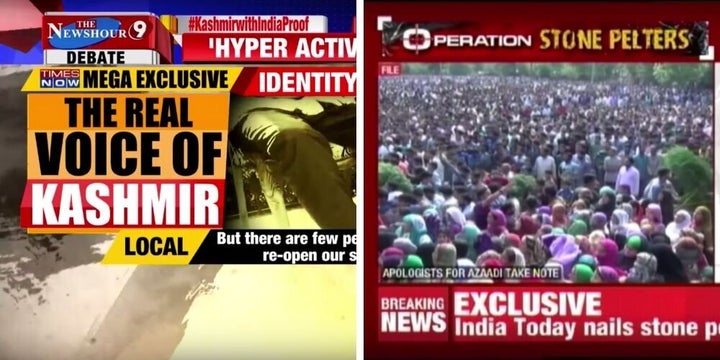
It is now almost a month since the Indian government announced its plan to bifurcate the contested region of Jammu and Kashmir and abrogate the special status it had in the Indian Constitution. Since then, Kashmir has been taken over by security forces and the government has imposed a communication blackout in the Valley. While the administration has been trying to portray that the situation is ‘normal’, reports from the ground tell a different story.
Overt jingoism has been rising steadily in India since the BJP came into power in 2014, and it wasn’t surprising that as soon as Amit Shah announced the move, it was endorsed by many irrespective of their support for the party. The move was welcomed by many mainstream media organisations (see here and here), and non-journalists also took to social media to share their joy. Some danced on the streets and there were reports of sweets being distributed. Yes, there were many informed critiques, but they seemed to reach a much smaller audience than the frothing anchors who dismissed every doubter as ‘anti-national’ from their pulpits.
For the latest news and more, follow HuffPost India on Twitter, Facebook, and subscribe to our newsletter.
This isn’t new. Many TV channels, Hindi and English, the prime source of information for many Indians, are responsible for manufacturing a discourse on Kashmir that they then take pains to maintain.
How does the media see and show a Kashmiri? The representation largely relies on a duality of the Kashmiri subject. In the first case, Kashmiris are portrayed as vicious and angry protestors who threaten the peace and quiet of the rest of the country—so this narrative often characterises them as people who foster militants or those who pelt stones on the Indian Army. Irresponsibly worded headlines such as ’Stone Pelting Mafia Exposed’; ′Kashmir wins, Pak Stooges Loose’; ′A tight slap to Pakistan’ are displayed on TV screens, while dramatic music and visuals play in the background.
“While most channels do have Kashmiri reporters, the absence of experts, academics and scholars, who can bring in a nuanced understanding of the conflict rather than contribute to a shouting match, has been sorely felt over the past month.”
In the second instance, Kashmiris are depicted as helpless, innocent victims brainwashed by foreign forces; basically, subjects waiting to be rescued, rather than people with any agency. This version of the narrative harps on the need to rescue the people of Kashmir, backed by a belief that they want to be rescued or, as we are seeing now, integrated. The support for Operation Sadbhavna, also known as Operation ‘Goodwill’, organised by the Army for ’winning the hearts and minds of people’, is one example. After the abrogation of Article 370, it’s this version that is currently steering the discourse on news channels. Many reporters, enthusiastic to get an ‘exclusive on-ground’ report from different parts of Kashmir, are doing their best to prove that Kashmiris are finally happy, insisting that the Valley is calm and that peace has been restored.
This duality of representation, which ignores the agency of Kashmiris, can lead to a cultural acceptance for the ‘complexity’ of the Kashmir issue, which is seen as one with no end in sight. The Kashmiri subject (both as dispute and as people) then becomes one open for deliberation and discussion for everyone except the people most affected. While most channels do have Kashmiri reporters, the absence of experts, academics and scholars, who can bring in a nuanced understanding of the conflict rather than contribute to a shouting match, has been sorely felt over the past month.
Currently, many Indians are comfortable with the additional deployment of troops in Kashmir and the extra restrictions due to a belief that Kashmiris should be restrained for their own security. Otherwise, goes the line of thinking, ‘miscreants’ may disrupt the peace.
This binary of a good/bad Kashmiri that denies actual human beings a say in the issues that affect them has created widespread distrust and desensitised many Indians from the sufferings and human rights violations taking place in the state.
The ambiguity surrounding the Kashmir conflict in the media has otherised Kashmiris to the extent that countering a stonepelter with a bullet is seen to be justifiable.
“There is a hyper-visibility of the Kashmiri identity as the ‘terrorist’ which has become a stereotype in the Indian imagination,” said Ather Zia, a US-based Kashmiri scholar.
This image, she added, “has tangible material and immaterial markers such as the beard, skull cap, holding a gun or a stone, which has enabled the construction of the other”.
Conversations about the Kashmir crisis need to be centred around the aspirations and experiences of the people of the state. The media has a responsibility to ensure mindful and ethical approaches to the representation of Kashmir and Kashmiris, especially at times like these. The road to peace will have to take into account fact-based analyses, not jingoistic chest-beating.
The author is pursuing an MA degree in Gender and Culture at the University of London.